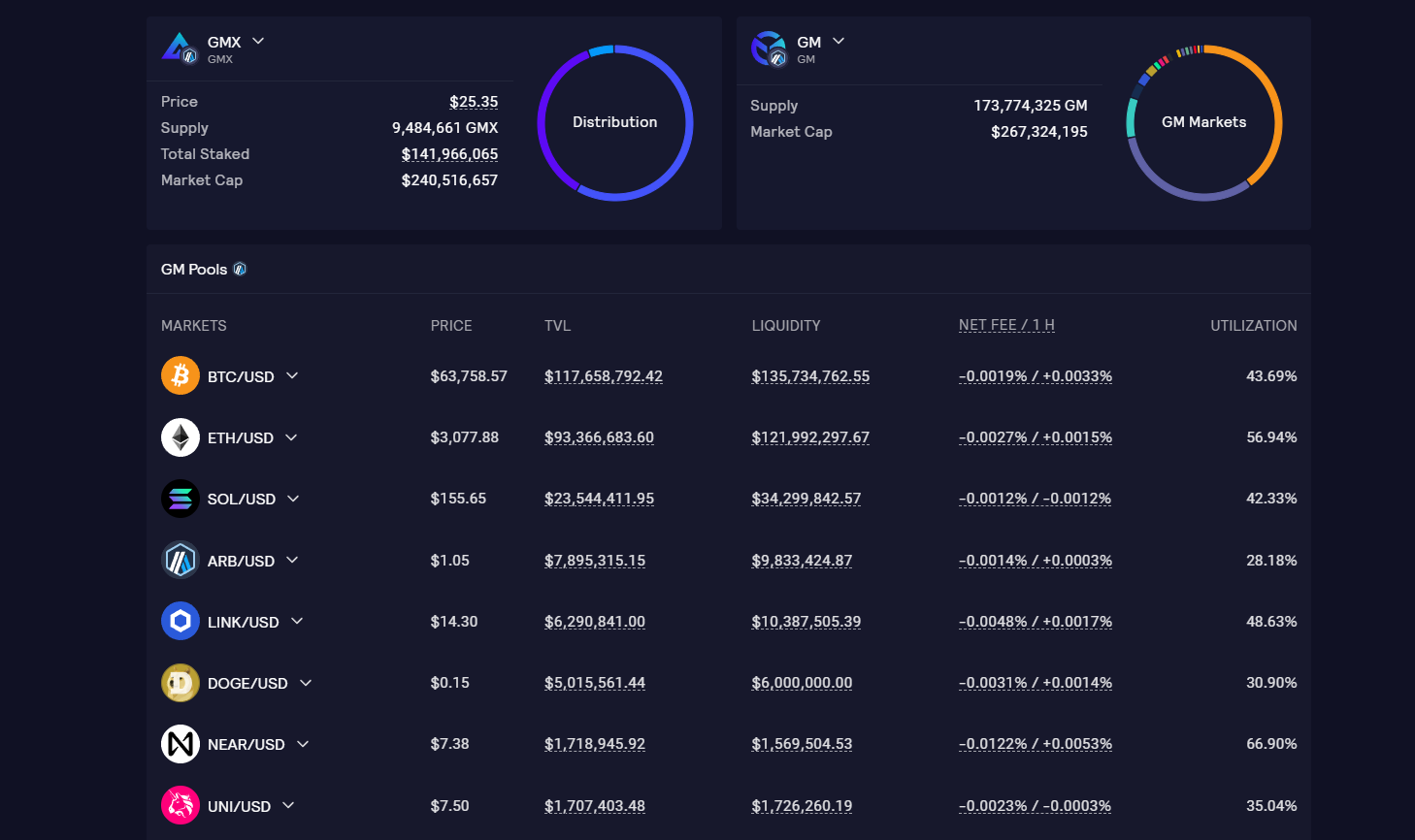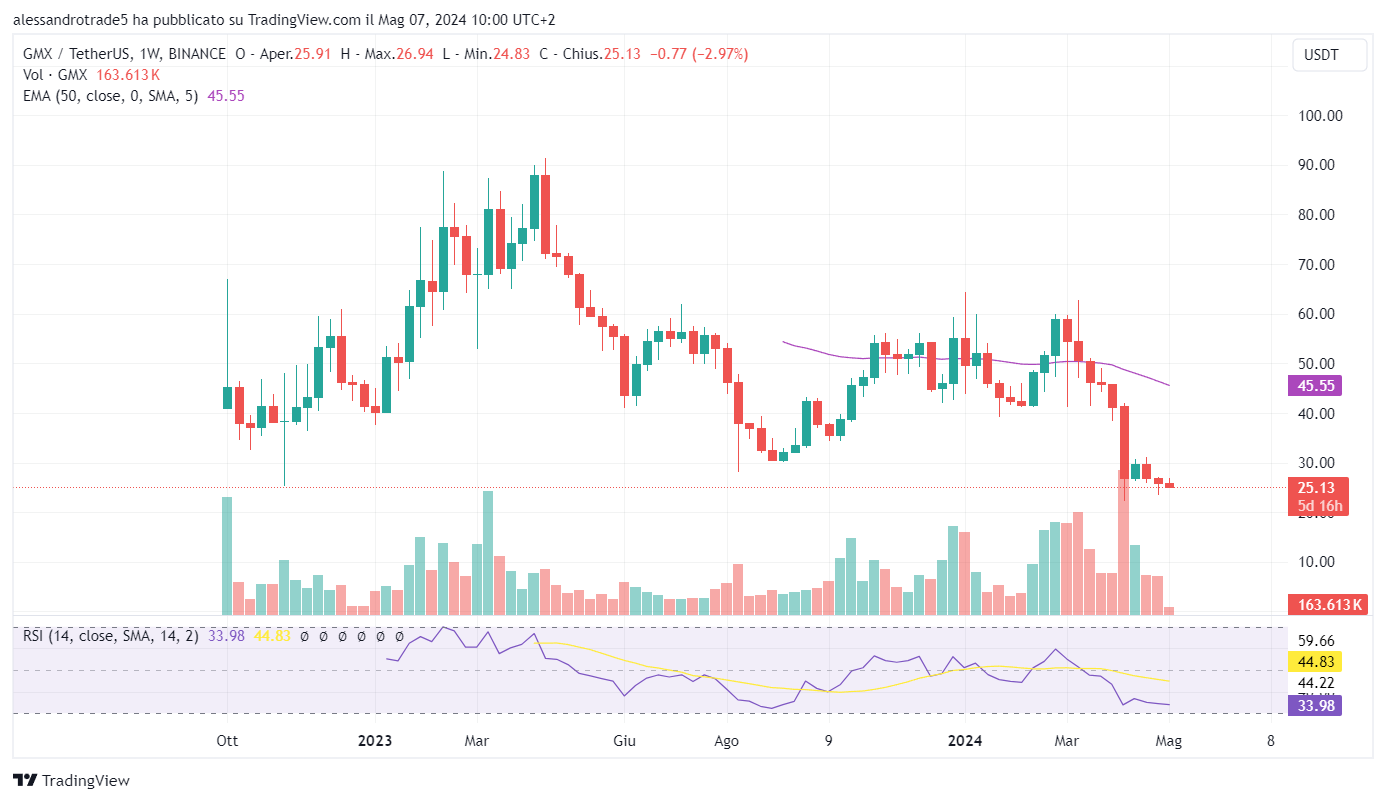In this article we explore GMX, a decentralized perpetual trading DEX that allows you to leverage up to 50X on various cryptos such as BTC, ETH, and many other altcoins.
In a short time, the platform has managed to become very famous in the DeFi world, thanks to its interesting features that allow you to operate in the encrypted markets in a very simple and efficient way.
Today GMX boasts a TVL of 500 million dollars and a cumulative volume of 200 billion dollars since its inception.
Let’s see all the details below.
Summary
GMX: the most popular decentralized perpetual crypto trading DEX in the world of DeFi
GMX is a decentralized DEX that allows spot and perpetual trading with up to 50x leverage on a wide range of cryptocurrencies such as BTC, ETH, SOL, DOGE, LINK, BNB, ARB, AVAX, NEAR, and many more.
Here users can exchange on-chain assets simply by connecting their non-custodial wallets, or they can act as liquidity providers by locking collateral for trades and earning trading fees.
Initially born from anonymous founders under the name Gambit Finance and launched on the BNB Chain, it was then renamed GMX and launched on the layer-2 of Ethereum Arbitrum in September 2021.
Today it has also expanded to Avalanche and has become extremely popular in DeFi, especially among those users looking for an efficient and high-performance decentralized platform.
The numbers speak for themselves: as of May 6, 2024 GMX has a volume in the last 7 days of 1.25 billion dollars, a cumulative volume of 199 billion dollars, a TVL of 436 million dollars and cumulative fees collected of 308 million dollars
From a technical point of view, GMX has introduced a new way of conceiving decentralized trading on DEX.
First of all, rather than opting for the classic architecture of DEX with dual token pools, GMX uses a single liquidity pool composed of 50% stablecoins (USDC, USDT, DAI, FRAX) and the remaining 50% of various tokens such as ETH and BTC.
All users who trade on the platform draw from this pool of cryptographic resources, within which the value of individual coins is secured by the price feed of Chainlink oracles, which ensures accuracy and reliability of the data.
This type of multi-asset pool is community-owned and is alternatively referred to as GLP: LP providers, by locking their coins on GMX, receive a corresponding amount of the GLP token representing their share of the provided liquidity.
Subsequently, the protocol automatically stakes the newly minted GLP tokens.
It is worth noting that those who provide liquidity to the decentralized trading DEX receive 70% of the trading fees in the form of esGMX tokens (a resource that guarantees the same rewards as GMX) and ETH or AVAX depending on the network, while the remaining 30% is offered to the platform’s stakers.
It is very important to underline how simplicity, intuitiveness, and immediacy of operations have been winning features for GMX, allowing the protocol to be used by the entire DeFi community, even among less experienced users. In addition, traders benefit from zero price impact and very low trading fees compared to the industry average.

GMX crypto: on-chain analysis
The newly introduced decentralized trading DEX also features a governance crypto, which bears the same name as the platform, namely GMX.
Token holders of GMX can participate in discussions regarding project developments by voting on governance proposals through their share of influence.
At the same time, however, crypto can also be locked in stake to take advantage of high yields. In particular, GMX stakers receive three types of rewards: multiplier points (points that reward long-term holders), GMX deposited as collateral, and rewards in ETH or AVAX depending on the originating chain.
The multiplier points, obtained at an APR of 100% compared to the amount deposited, then allow you to earn additional commissions.
However, at the moment, on the price front, the GMX token is not sailing in good waters as it is being traded with a drawdown of about 70% compared to the highs of April 2023.
In the last 10 weekly candles on the GMX-USDT trading pair, we can observe how 9 of these are bearish while only one hints at a timid green.

The weakness of the GMX token; after going through a bear market impeccably managing to stand out from all other cryptos, is also mainly due to the entry into the market of decentralized perpetual DEX competitor Hyperliquid.
This latest platform, driven by the trend of a possible airdrop of a proprietary token, has grown significantly in recent months, managing to capture part of GMX’s market share.
Just think that at the beginning of the year GMX had a market share of about 18% while at the end of April it recorded only a share of 3.5%.

It should also be noted that some of the historical investors in the GMX project and token have recently dumped all their “bags”, liquidating their holdings in the cryptocurrency.
In particular, we highlight how Arthur Hayes, a well-known crypto billionaire and founder of BitMEx, until a few months ago held tens of millions of dollars in GMX while at the beginning of April he sold all the tokens he owned.
Approximately 237,674 GMX have been sold since April 8th. This has definitely had a negative impact on the asset’s price action.

 en.cryptonomist.ch
en.cryptonomist.ch